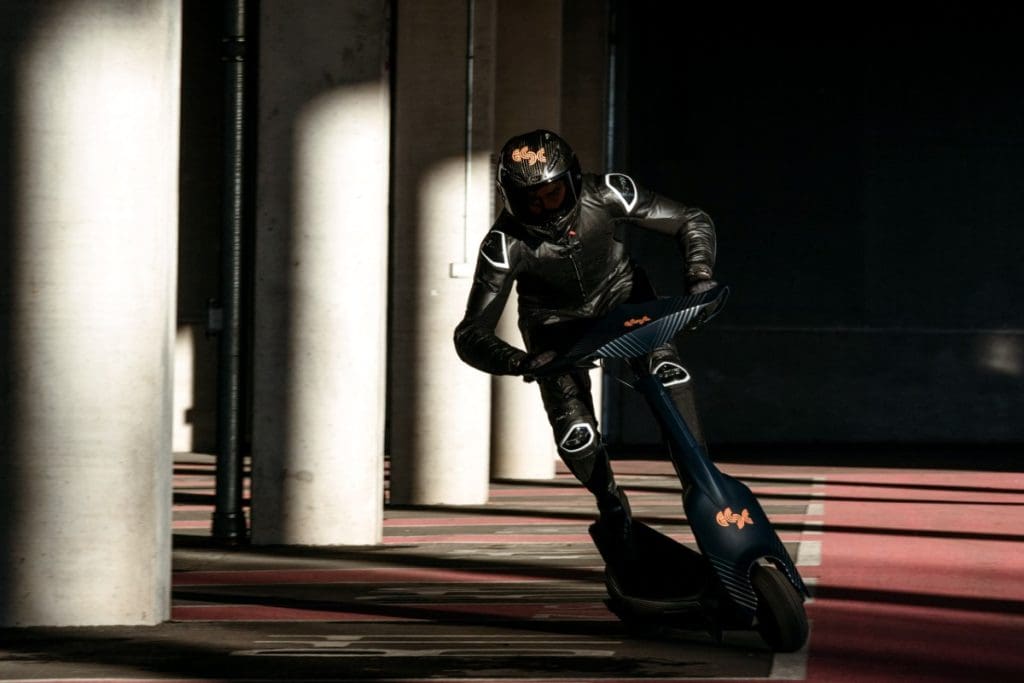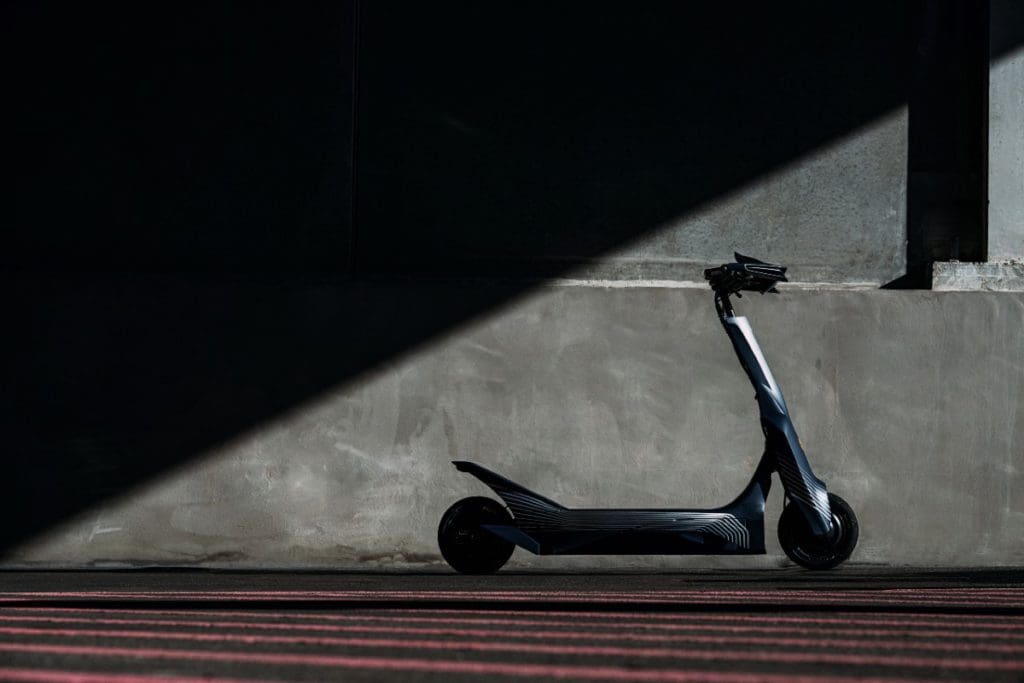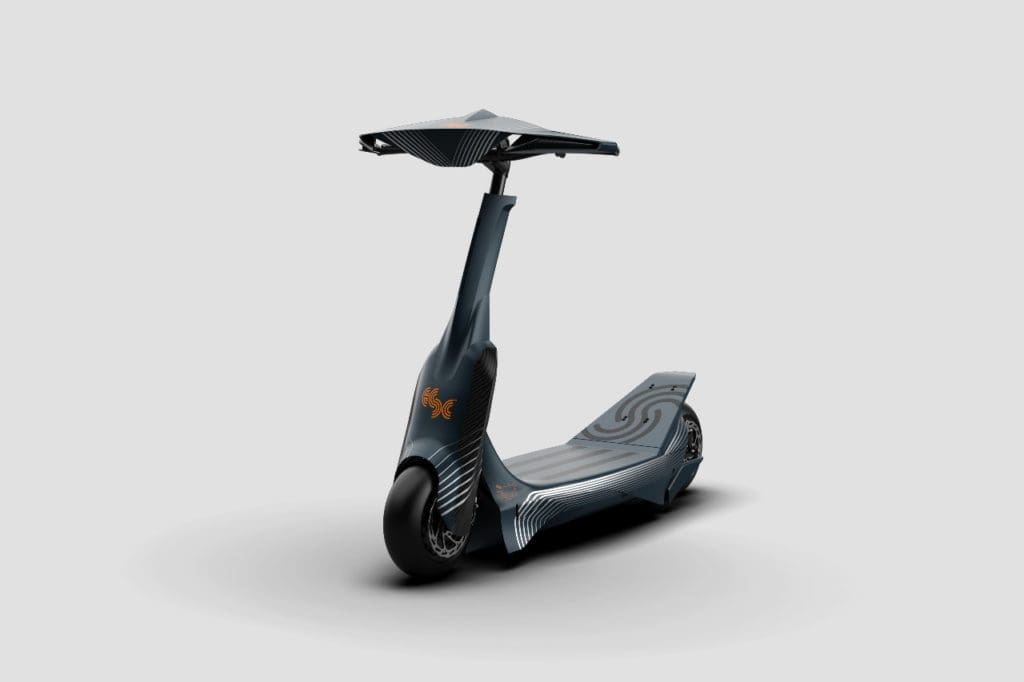E-Scooter Racing World Circuit Gathers Momentum

Not many people would wish to hit speeds in excess of 100kph on a transport device with no roll cage, completely open to the elements and riding on 16 centimetre wheels travelling just a few centimetres off the ground. This is, however, what anyone taking a trip on an eSkootr S1X racing e-scooter can look forward to.
The eSkootr S1X has been created for the planned eSkootr Championship (eSC) which will start towards the end of the year. The races will be conducted on specially built circuits – concrete seams and cracks in pavement would not do at these speeds on a ride with such tiny wheels – in city parks, streets or within stadiums.
eSC says these circuits will be just 400 metres to one kilometre long, and that the races with be heat-based lasting eight to ten minutes each. Six riders per heat will battle, or scoot, for a place in the final that should then feature a total of ten riders competing for a win.
Much like with Formula E where for the first couple of seasons teams had to use a standardised race car they could then modify and refine, the eSkootr S1X is intended to be the initial ‘stock’ scooter, then in subsequent seasons outside developers will be allowed to submit their own rides.

Powering the S1X are two 6kW motors, one on each wheel, that have been developed especially for the prototype racer and are powered by a 24Ah battery with 1.33kWh capacity. The e-scooter has a carbon fibre chassis and aluminium front and rear assembly and weighs 35kg, but has hydraulic disc brakes to combat the speeds it can produce. As for cornering, eSC says this model can lean over up to 50 degrees if the driver is brave enough.
With two separate motors powering the front and rear wheels, eSC needed to develop a system where the rider could control the power as sending too much to the front wheel during cornering would not be ideal for stability. As a result, when the throttle is opened the S1X delivers slightly less torque to the front motor than the rear, supposedly keeping the eSkootr stable when accelerating out of turns.
Power delivery is also split into two modes: a conventional thumb throttle on the handlebar and a boost button for maximum thrust along straights.
As for safety of speeding around on 100kph electric scooters, eSC has drafted in ex-F1 and Le Mans racer Alex Wurz as their ‘eSC Safety Ambassador’ to help design the safety measures and circuits. The S1X itself comes with a kill switch, cutting power to the scooter if the driver parts ways with his or her ride.
eSC has also appointed Formula 1 advisor Andy Mellor as chair of its safety commission. Mellor has been involved in F1 and motorsport safety for 20 years as a consultant to the FIA, and led the project to develop the Halo frontal protection device now fitted to all F1 cars.
However, the main issue right now with the the world’s first racing series for electric scooters is garnering enough teams to compete. eSC has signed up Carlin racing, which currently competes in Formula 2 and 3, and formerly in Formula E, but needs a total of 10 teams with 30 racers to make the championship viable.

As well as hopefully advancing tech in micro mobility, one of the supposed main aims of the series, according to eSC the ‘accessible’ cost of entry to the championship – A$720,000 a season, less than F3 – means they will hopefully be able to confirm more official teams soon.
You can see more information about eSC at www.esc.live
The organisers say that their ‘racing with purpose’ mission focuses upon seven of the United Nation’s 17 Sustainable Development Goals: Good health and wellbeing, Affordable and clean energy, Reduced inequalities, Sustainable cities and communities, Responsible consumption and production, Climate action and Partnerships for the goals.
Most of this article was first published on Wired.co.uk and then published in the Micromobility Report.
